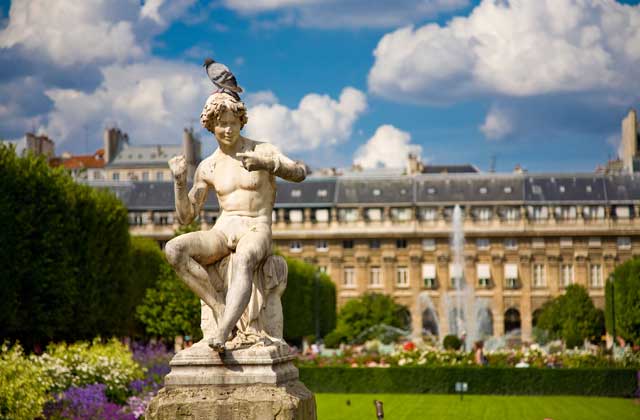The Experts' Guide To The World: Paris

In the most tourist-thronged quartier of the most-visited city in the world, there is an island of calm which is, blissfully, relatively undiscovered. The screeching of the Paris streets fades to silence as you enter its elegant walls. Dark arcades, in the Italian style, surrounda formal French garden of hedges, gravel, sandpits and fountains, offering a cool place to wander on a warm day or a peaceful spot for an haute-cuisine picnic.
And history? The Palais Royal, which was only ever briefly a royal palace, contains, inter alia: the shadowy corner where the future Emperor Napoleon lost his virginity, aged 18, to a prostitute in 1787; the home of the world's first discothèque in the 1950s; the venue of the first Molière plays in the mid-17th century; the site where the mob was wound up by bourgeois demagogues before it stormed the Bastille in July 1789; the place where Charlotte Corday bought the knife with which she stabbed the scabrous revolutionary Jean-Paul Marat in his bath in 1793; the homes, until the 1950s, of the risqué writers Colette and Cocteau...
Most of the Palais Royal is now, in effect, a public garden surrounded by boutiques; a kind of 18th-century shopping mall; an elegant apartment block; and a nature reserve for seagulls, pigeons and children, a few steps from the Louvre. But many tourists are put off by the name. They assume that a royal palace, even in a republic, cannot be open to visitors.
Indeed, its most visible part, just across the Rue de Rivoli from the Louvre, is closed to the public: it houses the Conseil d'Etat and the Conseil Constitutionnel, two branches of the French supreme court. But steer a little to the left and go through a narrow passageway, and you enter a public courtyard that contains the best-known, and most controversial, part of the Palais: a large walk-in sculpture resembling giant liquorice allsorts (the Buren columns), placed there in the 1980s. Press beyond that and you enter the 18th-century retail arcades and a miniature version of the Tuileries gardens. The first building on the site was constructed by Cardinal Richelieu, the world's "first prime minister", just before his death in 1642. The "cardinal's palace" briefly became a "royal palace", then, during the revolution, a "people's palace": a hot-bed of agitation, entertainment, pamphleteering, prostitution and shopping.
The arcades were added in the late 18th century. The apartments above the retailers in the south-east corner now house the Ministry of Culture.The rest of the palace contains some of the most sought-after, but never publicly offered, apartments in the French capital.
Thirty years ago, the palace was charmingly run-down. Even today, there are tatty stores which have their original purposes painted on the stones in scrolled 18th-century writing. One, in the western arcade, reads "Postiches d'Art" (literally, artistic wigs). Yet in the past few years, designer Paris has moved in. Stella McCartney has knocked two or three little shops into one. There is also a boutique selling expensive baseball shoes. Next door are the unreconstructed premises of "Desmarest, graveur [printer] depuis 1761", offering old letters for sale in the window. These include a lengthy epistle from Richelieu and a note written by Napoleon in 1811.
Some of the eclectic character of the Palais Royal has vanished. Much remains. Next time you have a few minutes to spare in Paris, invite yourself to the palace.
John Lichfield is Paris correspondent of The Independent
Subscribe to Independent Premium to bookmark this article
Want to bookmark your favourite articles and stories to read or reference later? Start your Independent Premium subscription today.

Join our commenting forum
Join thought-provoking conversations, follow other Independent readers and see their replies